Guest post by Haley Gillilan (Undergraduate Student Success Librarian), and Keith Weimer (Librarian for History and Religious Studies).
May is Asian American and Pacific Islander Heritage Month, making it a great time to feature materials created by, for, and about Asian Americans and Pacific Islanders. Join the Library in celebrating this heritage month and take a look at our recommendations below!
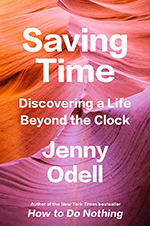 “Saving Time: Discovering A Life Behind the Clock” by Jenny Odell (Random House, 2023)
“Saving Time: Discovering A Life Behind the Clock” by Jenny Odell (Random House, 2023)
In her follow-up to her great work on resisting the attention economy, “How to Do Nothing,” Jenny Odell examines different senses of time. This book is incredibly expansive, considering the history of timekeeping, how we perceive time, and reflecting on how our relationship with time has changed over the pandemic. I found that this book took me quite some time to read, because I was digesting and savoring every page, and making many annotations. Ultimately, I found Odell’s book thought-provoking and emotionally resonant. —Haley Gillilan
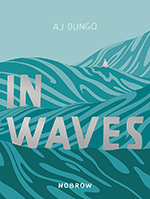 “In Waves” by AJ Dungo (Nobrow, 2019)
“In Waves” by AJ Dungo (Nobrow, 2019)
This beautiful graphic novel by AJ Dungo is a meditation on grief and surfing. While it might not seem as if those two concepts naturally mesh, Dungo weaves together a gorgeous and heartbreaking narrative about the loss of his girlfriend, alongside the history of the sport. Elegant, monochromatic, full-page illustrations of water and islands wash over the reader. For those grappling with sadness, depression, or complicated grief, Dungo’s graphic novel might be a soothing balm and reminder that they are not alone. —Haley Gillilan
“The Bandit Queens” by Parini Shroff (Ballantine Books, 2023)
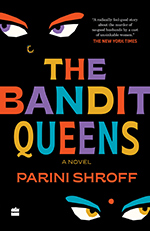 “The Bandit Queens” is unlike anything I’ve ever read. This novel follows a group of women in India who are plotting to get rid of their husbands, but if you think you know where this is going, I assure you that you don’t. I think that this novel would ultimately be considered “women’s fiction,” but it has something for everyone. It’s sadistically funny, tenacious, culturally immersive, and intense, but it also has some cozy mystery elements that many people would love. Anyone looking for an energetic rollercoaster with searing feminist commentary, look no further than Shroff’s “The Bandit Queens.” —Haley Gillilan
“The Bandit Queens” is unlike anything I’ve ever read. This novel follows a group of women in India who are plotting to get rid of their husbands, but if you think you know where this is going, I assure you that you don’t. I think that this novel would ultimately be considered “women’s fiction,” but it has something for everyone. It’s sadistically funny, tenacious, culturally immersive, and intense, but it also has some cozy mystery elements that many people would love. Anyone looking for an energetic rollercoaster with searing feminist commentary, look no further than Shroff’s “The Bandit Queens.” —Haley Gillilan
“Insurrecto” by Gina Apostol (Soho, 2018)
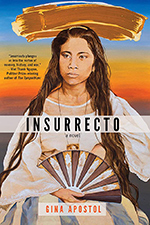 Gina Apostol’s novel “Insurrecto” presents an encounter between a Filipina immigrant, Magsalin (her professional name), and an American filmmaker, Chiara Brasi. Chiara is hoping to finish her father’s film about an uprising against American troops occupying the Philippines after the Spanish-American War, which led to U.S. acquisition of the Philippines, and has hired Magsalin as a translator of and consultant for her script. The novel uses the interactions between the two women, as well as depictions of the uprising and events from the 1970s when both women were children and Chiara’s father was using the Philippines as a set for a film about the Vietnam War, to represent stages in the history of U.S. imperialism and Filipino-American interactions. —Keith Weimer
Gina Apostol’s novel “Insurrecto” presents an encounter between a Filipina immigrant, Magsalin (her professional name), and an American filmmaker, Chiara Brasi. Chiara is hoping to finish her father’s film about an uprising against American troops occupying the Philippines after the Spanish-American War, which led to U.S. acquisition of the Philippines, and has hired Magsalin as a translator of and consultant for her script. The novel uses the interactions between the two women, as well as depictions of the uprising and events from the 1970s when both women were children and Chiara’s father was using the Philippines as a set for a film about the Vietnam War, to represent stages in the history of U.S. imperialism and Filipino-American interactions. —Keith Weimer
 “Making A Scene” by Constance Wu (Scribner, 2022)
“Making A Scene” by Constance Wu (Scribner, 2022)
This book of essays by actress Constance Wu is a refreshing memoir, with a mix of some heavy hitting emotional reflections and heartwarming anecdotes. I was looking forward to this book because Constance Wu has been brave and outspoken about abuse in the entertainment industry, and I wanted to read more about her experiences in her own words. I think that readers in our community might be particularly interested in this work, as Wu grew up in Richmond, Virginia, and some of her childhood memories feature prominently in the book. —Haley Gillilan
 “Four Great Treasures of the Sky” by Jenny Tinghui Zhang (Flatiron Books, 2022)
“Four Great Treasures of the Sky” by Jenny Tinghui Zhang (Flatiron Books, 2022)
For those looking for a book about characters living in a time period that is rarely depicted in mainstream media, “Four Treasures of the Sky” might have something to teach you. Our heroine, Daiyu, is smuggled from China to the United States in the 1880s. She adapts to her circumstances and fights for her freedom across the American West. Keep a box of tissues nearby, though, as the book barrels towards a heartbreaking conclusion. In Jenny Tinghui Zhang’s author’s note, she mentions that this book was an attempt to tell a story that is lost to time and give a narrative to those affected by the Chinese Exclusion Act. I recommend this book to all lovers of historical fiction.—Haley Gillilan
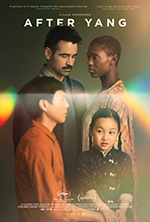 “After Yang” directed by Kogonada (A24 Films, 2021)
“After Yang” directed by Kogonada (A24 Films, 2021)
A very low-fi science fiction gem, it’s possible that “After Yang” slipped under your radar. Set in a near future where robots are used as nannies, Jake (Colin Farrell) desperately tries to find a fix for his daughter’s adoring and gentle android friend, Yang. In his efforts, he encounters Yang’s life beyond who he was as a babysitter. “After Yang” doesn’t have a lot of flashy special effects or explosions that these types of stories usually come with, but digs deep into existential ideas about grief and contentment. You can stream “After Yang” on our library streaming platform, Swank. —Haley Gillilan
“Christian Pluralism in the United States: The Indian Immigrant Experience” by Raymond Brady Williams (Cambridge University Press, 1996)
 Raymond Brady Williams’ scholarly monograph, “Christian Pluralism in the United States: The Indian Immigrant Experience,” provides a through overview of this vibrant segment of the Indian American community circa 1996. Almost every Christian tradition in the American landscape is represented in the Indian community, and these are not all products of imperial missionary endeavors. (The “Mar Thoma Christians” and their “Malabar Rite” Catholic offshoots claim a heritage dating back to Jesus’ disciple Thomas in the first century.) These Christian communities experience many tensions in trying to maintain a faith commitment along with (regional) ethnic and in some cases caste identities, marriage traditions and rituals from the Indian subcontinent. Only the Baptists seem to have built something of a “pan-Indian” identity. A review of Prema Kurien’s 2017 book, “Ethnic Church Meets Megachurch: Indian American Christianity in Motion,” which I haven’t read, suggests that most of these tensions have continued for the past quarter-century, with shifts towards greater Americanization and “nondenominational” Protestantism (trends also present among other American ethnic groups). —Keith Weimer
Raymond Brady Williams’ scholarly monograph, “Christian Pluralism in the United States: The Indian Immigrant Experience,” provides a through overview of this vibrant segment of the Indian American community circa 1996. Almost every Christian tradition in the American landscape is represented in the Indian community, and these are not all products of imperial missionary endeavors. (The “Mar Thoma Christians” and their “Malabar Rite” Catholic offshoots claim a heritage dating back to Jesus’ disciple Thomas in the first century.) These Christian communities experience many tensions in trying to maintain a faith commitment along with (regional) ethnic and in some cases caste identities, marriage traditions and rituals from the Indian subcontinent. Only the Baptists seem to have built something of a “pan-Indian” identity. A review of Prema Kurien’s 2017 book, “Ethnic Church Meets Megachurch: Indian American Christianity in Motion,” which I haven’t read, suggests that most of these tensions have continued for the past quarter-century, with shifts towards greater Americanization and “nondenominational” Protestantism (trends also present among other American ethnic groups). —Keith Weimer
